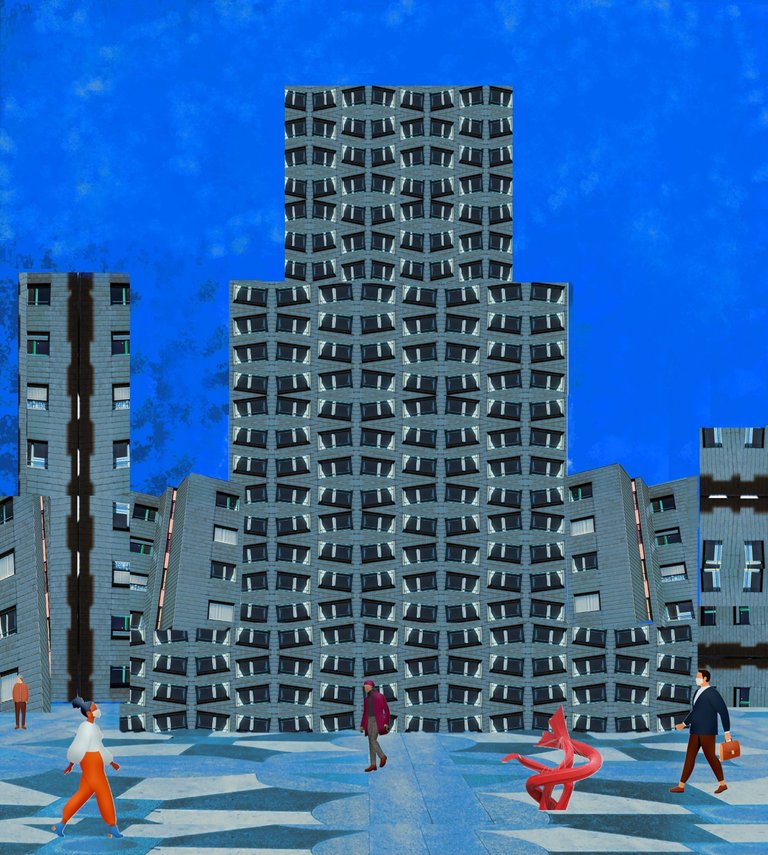
The building complex in my collage was constructed out of pieces I took from @shaka's template photo for Round #80 of Lets Make a Collage. Here is the template photo:

Ordinarily, buildings and city scenes don't inspire me. But there was something about the angles in this picture I found intriguing. I extracted one window, and kept repeating it, changing orientation all the time, until I had created a building.
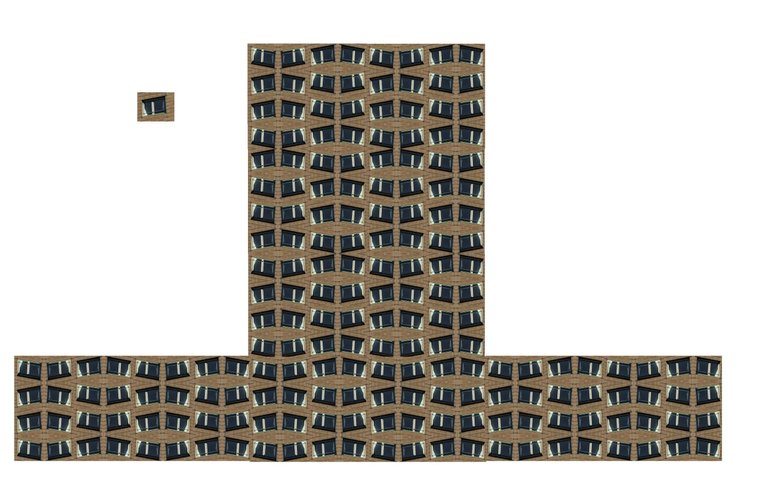
After that, I took more buildings, or bits of buildings from @shaka's photo until I had what I thought was a satisfying complex. As I worked with these geometric forms, I recalled my days in high school geometry. Of all the subjects I ever studied, geometry came most naturally to me. This stands out because I didn't have much interest in math before or after that.
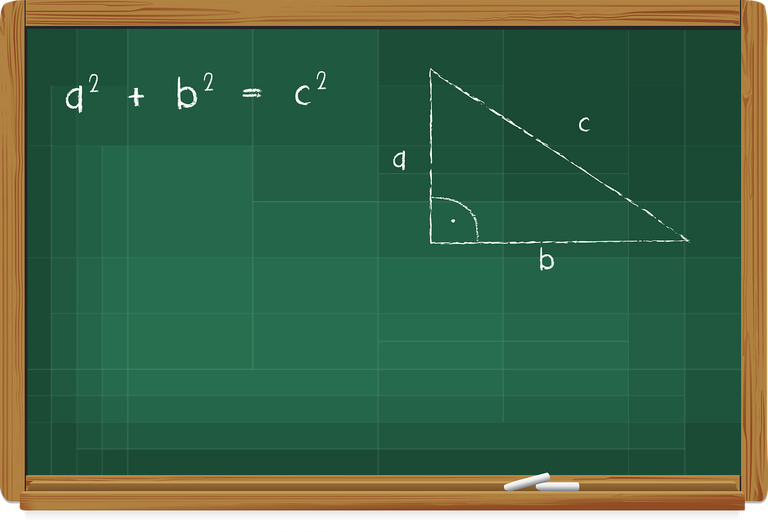
Image credit: Pixaline on Pixabay

This week I decided to take a look at the mystery of why geometry seemed beautiful to me. After reading a bit, I came across the idea that right brain people are more attracted to geometry than to other areas of math.
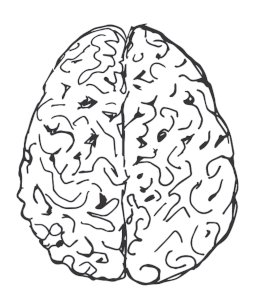
Image credit: martabystron on Pixabay
One article, in mathGiraffe.com, states: "a lot of the students who enjoy geometry are often the more artistic & spatial learners. They thrive in a right-brain-centered environment". Is that the secret to my geometry affinity? Wait a minute. Although I tend to be very creative, I have dreadful spatial visualization skills. Way worse than average.
I started looking at the right brain/left brain theory. Where did that come from? This theory is attributed to Roger Sperry, a psychobiologist from CAL Tech (Pasadena, CA). Sperry won a Nobel Prize for his bilateral brain (he called it split-brain) 'discovery'.
Roger Wolcott Sperry
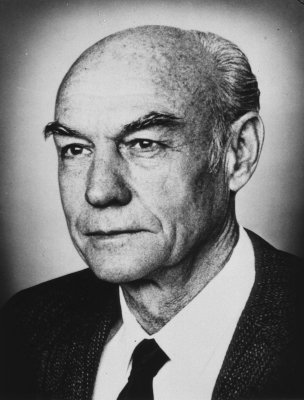
Image credit: U.S. National Institutes of Health. Public Domain. Sperry tested his split-brain theory by severing the corpus callosum in the brains of animals. The corpus callosum is a structure that connects the right and left hemispheres. Sperry then experimented on humans in whom the structure had previously been severed.
After experimenting on animals and humans Sperry concluded that "hemispheres in the brain had different functions". Summed up, the split-brain theory hypothesized that the "left hemisphere of the brain was responsible for language understanding and articulation, while the right hemisphere could recognize a word, but could not articulate it."
Brain with Corpus Calussum and Parietal Lobe Indicated
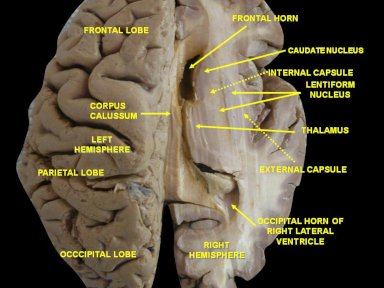
Image credit: Anatomist90. Used under a CC 3.0 license.

A generation of right brain/left brain research followed Sperry's 'discovery'. In 2013, a landmark study at the University of Utah debunked the split-brain theory. The authors of this study asserted, "neuroimaging data has not provided clear evidence whether such phenotypic differences in the strength of left-dominant or right-dominant networks exist."
Since the Utah research, countless studies have supported its findings, although there does exist proof that certain parts of the brain are better at performing some functions than others. However the idea that there are right-brain and left-brain individuals has been discredited.
Dr. Robert H. Shmerling, writing in Harvard Health Publishing (of the Harvard Medical School), explains that, for "individual personality traits, such as creativity or a tendency toward the rational rather than the intuitive, there has been little or no evidence supporting a residence in one area of the brain".
Albert Einstein, 1947
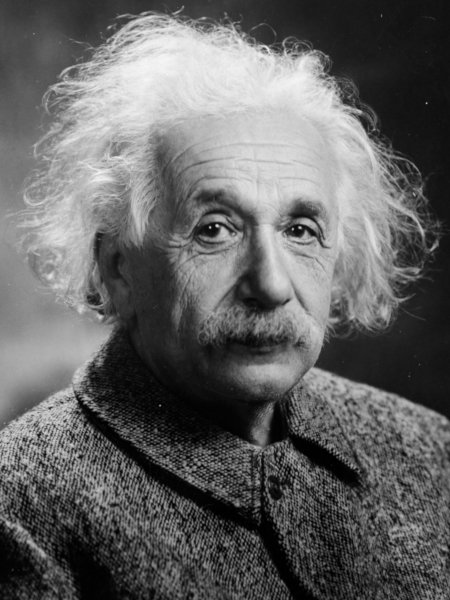
Image credit: Orren Jack Turner, Princeton, NJ. Public domain
Brain scans of mathematicians reveal no evidence of the split-brain personality. A post-mortem examination of Einstein's brain showed symmetrical development of the hemispheres. Although, his brain was extraordinary in one way: its inferior parietal lobules were larger than might be found in most brains. It is suggested that this development in the parietal lobe increased connectivity between the two hemispheres, and this increased connectivity might be a clue to Einstein's genius.

To get back to geometry: why did I love it, and why were its principles self evident to me? After writing this blog, I'll take a stab at an answer. I'm unique. We are all unique. Not left brained nor right brained. For me, geometry was a gift of my peculiar (that is, individual) neural circuitry. I'm grateful for that gift. It certainly made high school easier and it gave me insight into relationships between shapes and angles. For someone with my poor spatial visualization skills, that had to be a plus.

My Collage
These are some intermediate steps I took on my way to creating my plaza with a building complex:

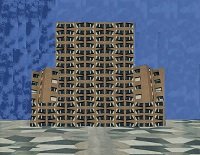
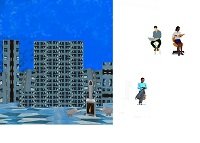
I rejected the stove sculpture, benches and sitting people, but decided to turn the whole thing blue.
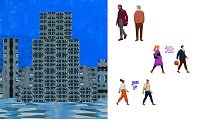
I finally settled for walking people (some with masks) and an abstract red sculpture. I also added another level to the central building
All elements are public domain, as follows:
Plaza Pixabay caffe
Person walking Pixabay
Person standing, caffe Pixabay
Masked walkers, caffe Pixabay
walkers masked, caffe Pixabay
red sculpture A-Marble pure.png

Thank you @shaka, for this the 80th round of LMAC. You seem to have a limitless supply of amazing photographs, and the community responds with an astonishing array of creativity.
I invite everyone who reads this blog to join in the fun. We all win when we create, and the LMAC community welcomes all comers. Rules may be found on @shaka's blog. Our school, run by the inimitable @quantumg, offers technical instruction on creating a collage. We even have a chat channel, where you can connect with other members of the community.
Good luck to everyone who enters the contest!

Great creation as always with the hand drawn people. Love the building you constructed A.G.
I did like geometry in school but not sure what kind of brain I have. :)
You have a wonderful brain. It loves animals, and sees magic in collages. It writes stories that take us to distant places. And, it likes geometry! My friend in the North, I knew there was something special about you :))
Thank you for your kind words and for your generous support. I hope spring is treating you and your furry friends well.
🌸🤗☀️
I really like those buildings and the plaza. Very unique perspective. Geometry was mu worst subject.
But I'll bet you're good at poker. I can't play poker :)) Thank you for your comment, and your kind words!
I was not good in math. 😁
:))
I don't think I ever got to the end of a long division problem with the correct answer. Just geometry I like :)
Haha. 😁
Hi, I don't know what kind of brain I have, but I don't like math, although I do love planning, organizing and budgeting.
I was very bad at math in school.
Your collage as always very creative and didactic.
You have a wonderful brain! I see that every week in your collages, and in your comments :) As for budgeting, I'm a disaster 😄
Thank you for your kind comments.